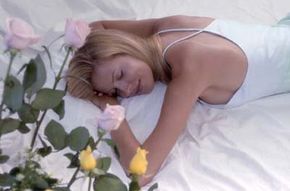Natural sleep aids, along with "alternative remedies," are viewed by many people with skepticism. They bring to mind images of witch doctors, shamans, tonic peddlers, and those "miracle" vitamins and gadgets that are hawked on late-night TV ads. We are justified in being skeptical of products that promise cures and carry no proof of effectiveness other than testimonials from people who refer to the pricey product as "magical" or "miraculous." Most of the magic is in the form of smoke and mirrors designed to sucker you into spending your hard-earned cash.
Such scams, unfortunately, can mask the fact that there are a few alternative approaches that may very well help you manage your health and, in particular, your sleep. Some of these alternatives may be less expensive and may be easier on the body than pharmaceutical options. That's not to say that all alternative remedies are necessarily effective, are less costly than medication, or are free of side effects.
Advertisement
Nor should they be relied on to combat serious sleep disorders or insomnia that causes severe daytime fatigue; such conditions require medical intervention. But some alternative therapies may help in combating insomnia caused by stress. Indeed, nearly all the remedies discussed in this article are aimed at helping you to relax so that sleep comes more easily.
On the next page, learn about how acupuncture works, along with the benefit of acupuncture on sleep.
For more information on sleep and sleep disorders, see:
Advertisement
